In 1898, tensions between the US and Spain finally boiled over after the battleship Maine blew up in Havana harbor. Both sides prepared for war, the US to secure independence for Cuba, Spain to preserve the remnants of its once-great empire. But while the bulk of attention was fixed on the Caribbean, where Cuba was blockaded on April 21st and war was declared 4 days later, the first clash would be on the other side of the globe.
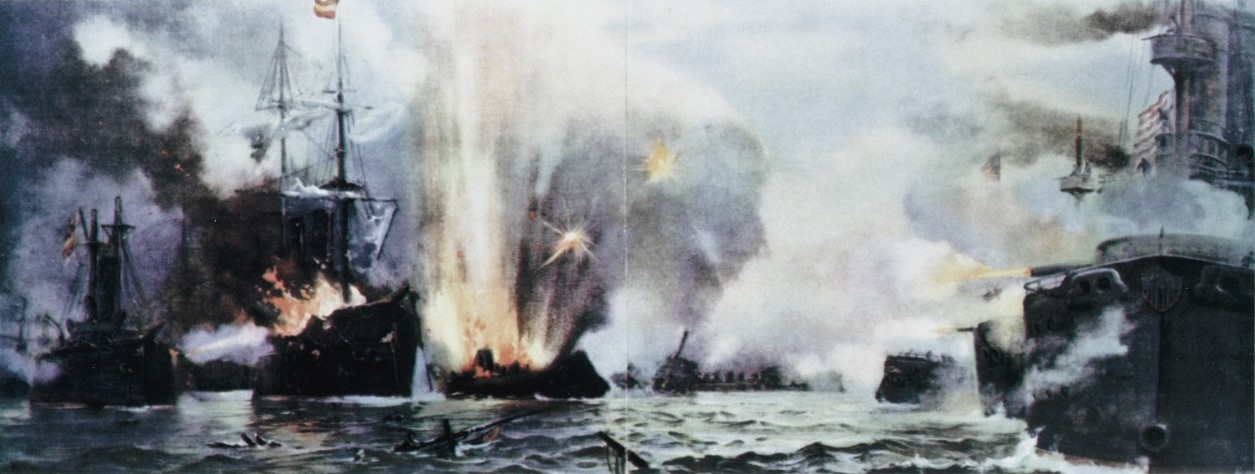
In the Pacific, the Asiatic Squadron under Commodore George Dewey was assembled at Hong Kong to attack the Philippines. Dewey was instructed to keep his ships full of coal, and enlist all the men he could get. Reinforcements were rushed to back up his initial squadron, the protected cruisers Olympia and Boston and the gunboat Petrel. The cruisers Raleigh and Baltimore were dispatched from the European and Hawaiian stations, the gunboat Concord came from fishery protection duty in the Bering Sea, and the Revenue Service Cutter1 McCulloch arrived from Singapore. In April, Dewey was instructed to purchase a pair of auxiliaries to support his drive on the Philippines, to land extra stores and woodwork, and to paint over the traditional peacetime white with wartime grey. Baltimore arrived on the 22nd, and the next day, as the blockade of Cuba was declared, the British governor asked the American squadron to leave.2 They sailed on the 25th for a nearby bay, where they trained and waited for the American consul from Manila to arrive with the latest intelligence. On the 27th, the consul boarded Olympia, bringing reports of the Spanish defensive preparations. Three hours later, the squadron had weighed anchor and was putting to sea.
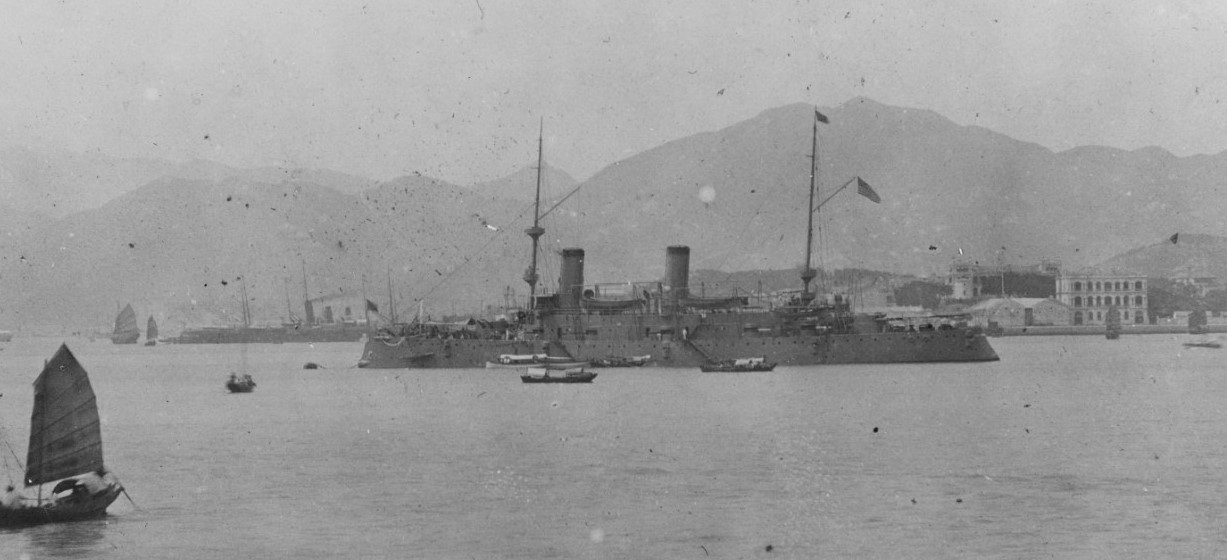
Olympia in Hong Kong just before the outbreak of war
On the 30th, Dewey's fleet had arrived in Philippine waters, and his men set about stripping the ships of all excess wood to hold down the risk of fire, while Boston and Concord went into Subic Bay, where the Spanish fleet under Admiral Montojo was reported to be. However, he had abandoned Subic as both poorly-protected and too deep to give his crews a chance of abandoning ship, and had withdrawn his force to an anchorage at Cavite near Manila. He was afraid that an attempt to meet the Americans under steam would end poorly, and counted on the fortifications at Cavite to even the odds.3 His fears were not entirely unfounded. His force was composed of two gunboats and four unprotected and two protected cruisers. The youngest of these ships was a decade old, the same age as the oldest of Dewey's ships,4 and in poor material condition. Several other ships were reduced to floating batteries by problems with their machinery, and others were merely hulks. Several had hulls that were entirely or partially wooden.
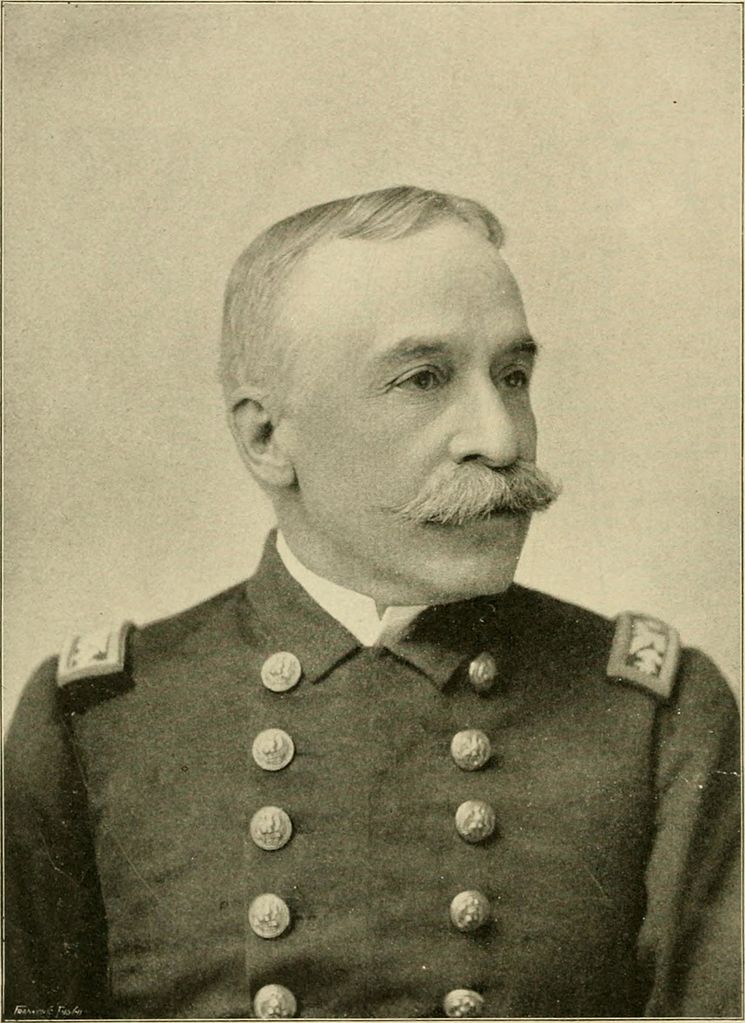
George Dewey
Dewey decided to strike boldly at the Spanish fleet, passing into Manila Bay at midnight. The Spanish had mined the main channel, but they had laid the mines so deep that the Americans were able to sail right over them.5 The forts positioned to guard the entrance to the bay were equally ineffective. Even though flames from McCulloch's funnel gave her away, the shore batteries fired only a few shots, which fell far short. The squadron continued on towards Cavite, arriving shortly after dawn.
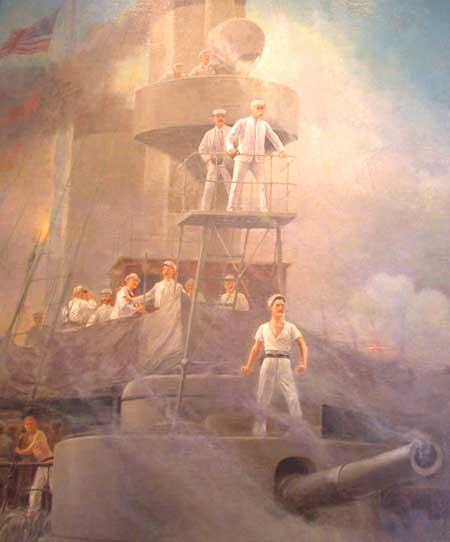
Dewey aboard Olympia
At 0515, the Spanish shore batteries at Cavite opened fire with their obsolete 5.9" guns, followed by the rest of the Spanish fleet. The Americans were still well out of range, although by 0541, they had closed to 4,000 yards, and Dewey gave the famous order to Olympia's captain. "You may fire when ready, Gridley."
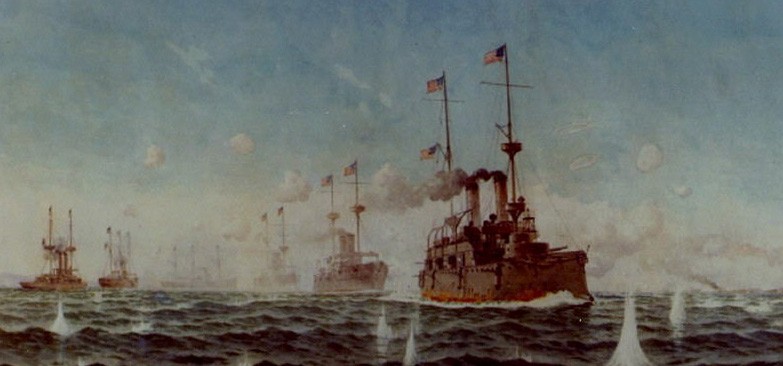
Gridley was ready, and Olympia's port guns opened fire, followed by the ships trailing her in line astern. The American line crossed back and forth, pouring fire into the Spanish ships. Their broadside was about three times that of their enemies, a disparity magnified by the lack of Spanish QF guns. The Spanish were badly battered by the American passes, each of them closer than the last, but failed to hit back effectively. During the fifth pass, Montojo ordered his flagship, Cristina, to slip her cables and charge the Americans, signalling the other ships to follow. Immediately, every American gun was trained upon her, and the hail of projectiles quickly inflicted grievous damage. Over half of her crew of 400 was killed or wounded, including Admiral Montojo, and the magazines had to be flooded to prevent a fire from reaching them, although that mattered little, as only two men were still able to fight her broadside guns. She turned shoreward, and the order was passed to abandon ship.
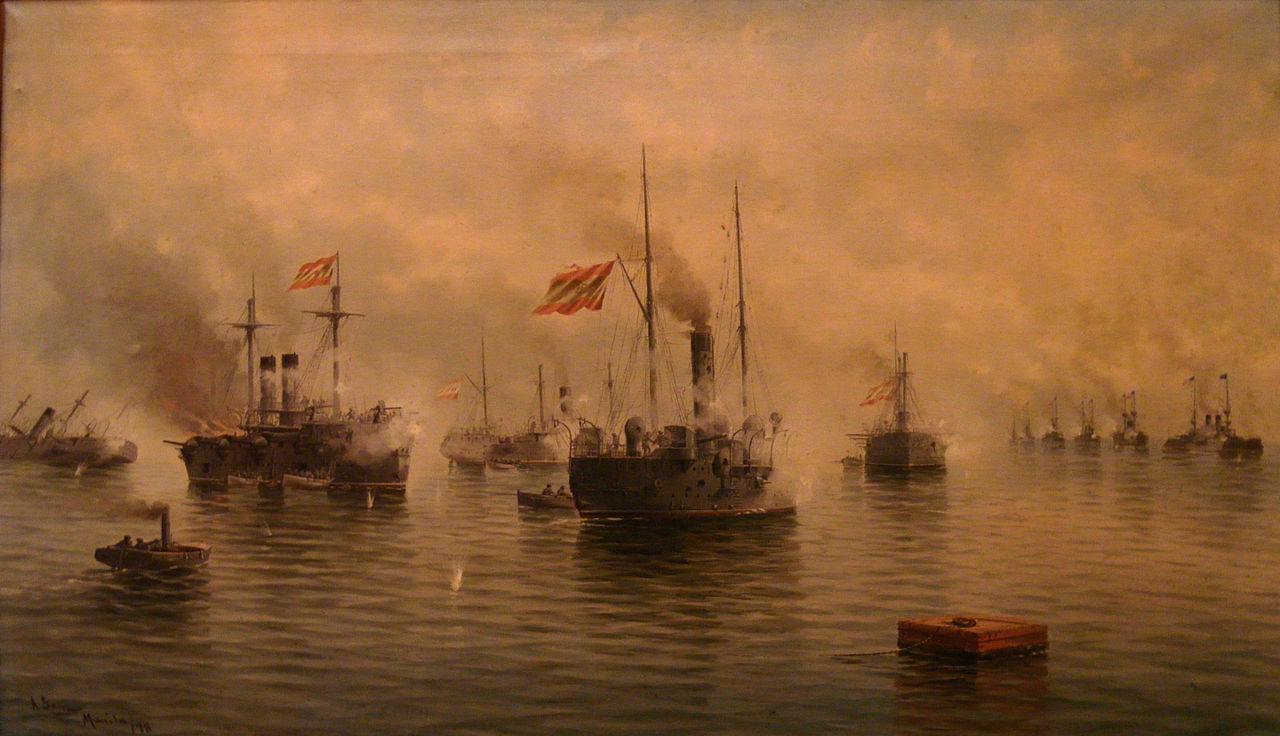
The other Spanish vessels fared little better. One, Castilla, had had her starboard guns landed for use in shore batteries, and her port side heavily reinforced with sandbags. Early on, her forward mooring was shot away, and she swung, exposing her starboard side. She was soon ablaze, and her captain ordered her abandoned. Most of the other vessels had many guns out of action, and some were on the verge of sinking, when the Americans drew away at around 0745. Dewey had been informed that the squadron was down to only 15 rounds per gun and the Spanish were as yet showing little sign of the damage they had taken. Had this been true, it would have placed the American squadron, far from home and facing numerically superior Spanish defenses, in a very dangerous situation, but further investigation determined that the message had been meant to say that 15 shells had been fired per gun. To hide the reason for the withdrawal, Dewey ordered the crews to breakfast, then returned at 1040 to finish off the Spanish, who had withdrawn to an even more sheltered position in Bakor Bay. At this point, it was increasingly obvious that the battle was all but over. Ulloa was sunk by American fire and a nearby shore battery silenced. Montojo ordered the rest of the fleet to scuttle their vessels and take the breechblocks ashore. The naval base at Cavite quickly surrendered, although Dewey did not have the troops to take Manila.
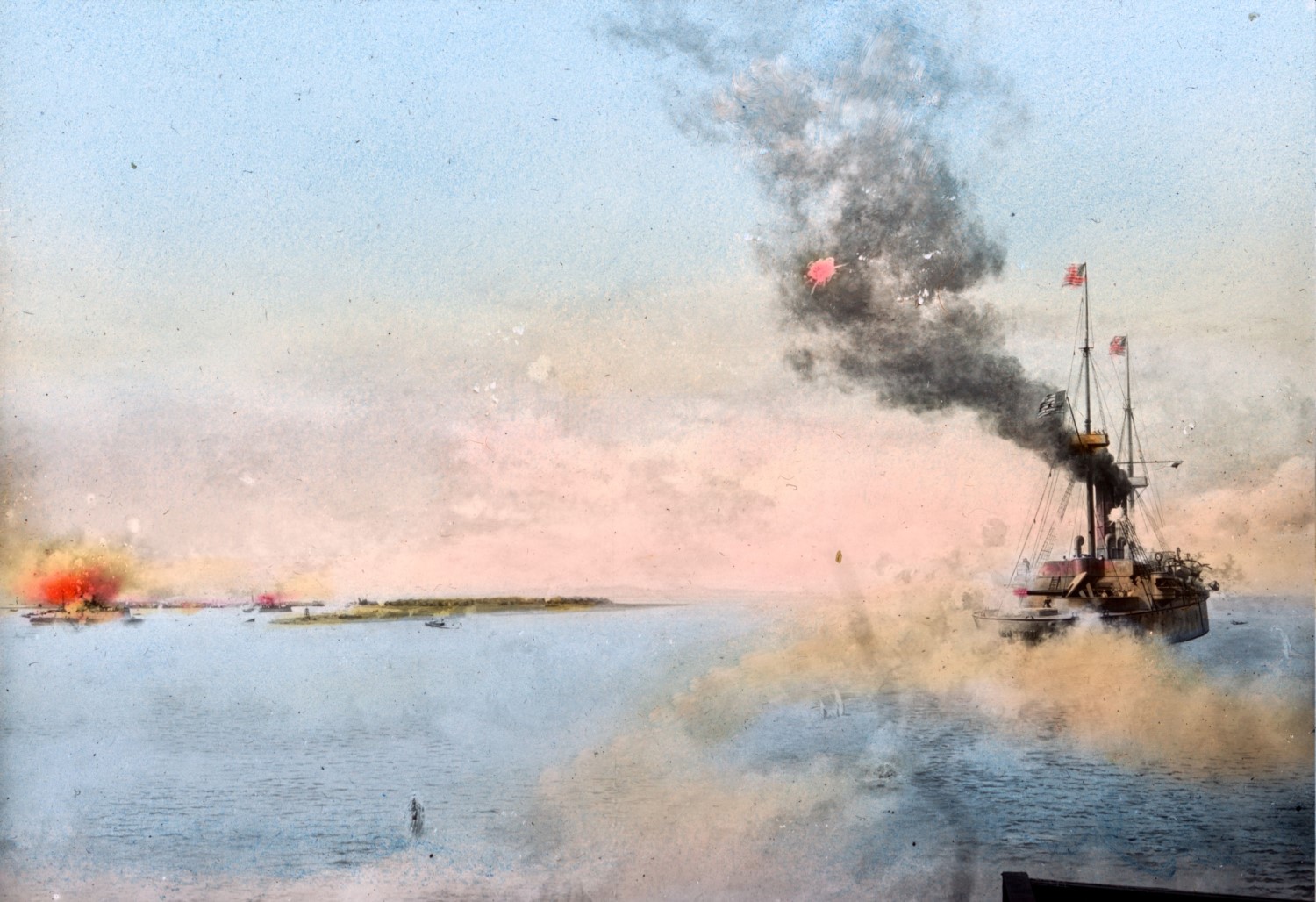
Boston during the battle
Dewey had won one of the most one-sided victories in the history of the US Navy. The Spanish had suffered approximately 167 men killed and 214 wounded, while American casualties totaled only eight men wounded aboard Baltimore by splinters and a graze aboard Boston. The only death on the American side was the Chief Engineer of the McCulloch, which had not even been engaged. He died of a heart attack brought on by the intense heat of the engine room, which reached 160°F in some ships.6 Three Spanish ships had been sunk, eight burned and scuttled, and two captured for a trivial amount of damage to the Americans. Boston suffered the most, taking a 6" shell hit which started a fire among the hammocks, although it was swiftly extinguished.
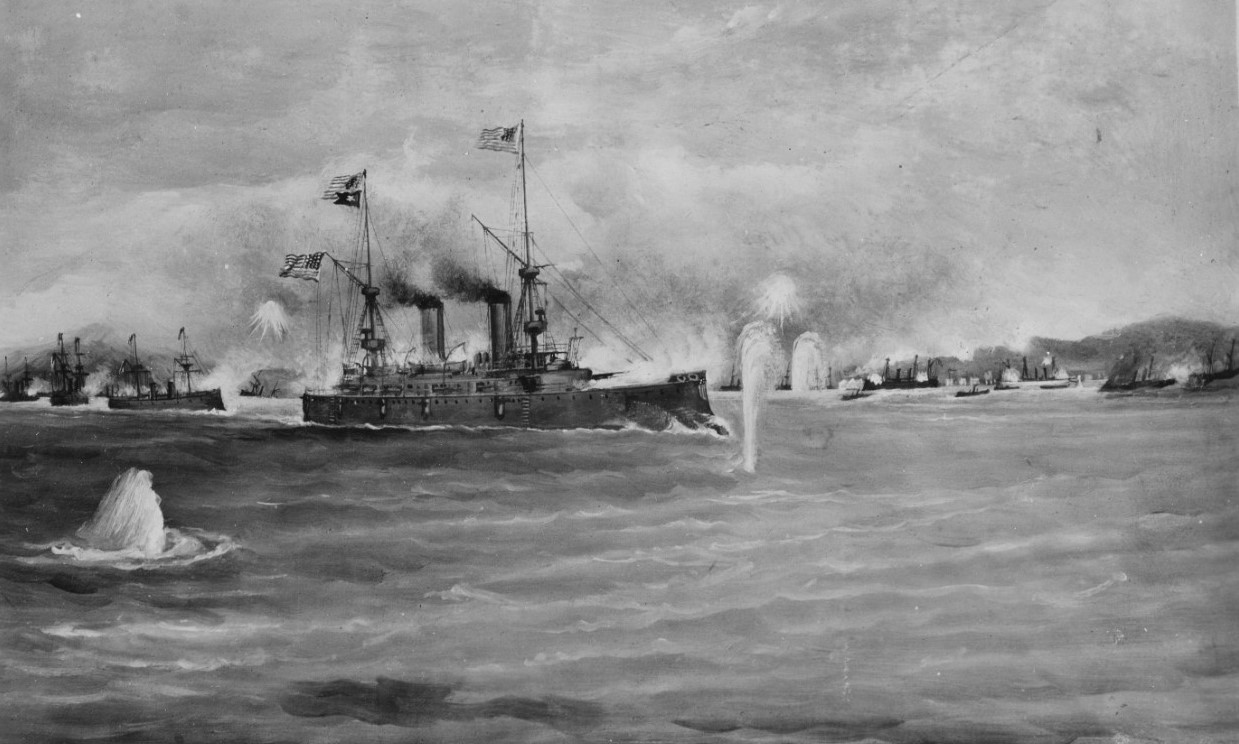
Despite the short range, the American gunnery was not particularly impressive. Even the 8" guns scored only 9% confirmed hits, although it's likely that many hits were either obliterated by the damage or hidden when the ships sank, and the smaller guns performed even worse. The Spanish gunnery was downright awful, a condition both sides ascribed to a lack of target practice. The Americans believed that the Spanish had conducted themselves gallantly, but the disparity in strength and firepower made it ultimately hopeless.
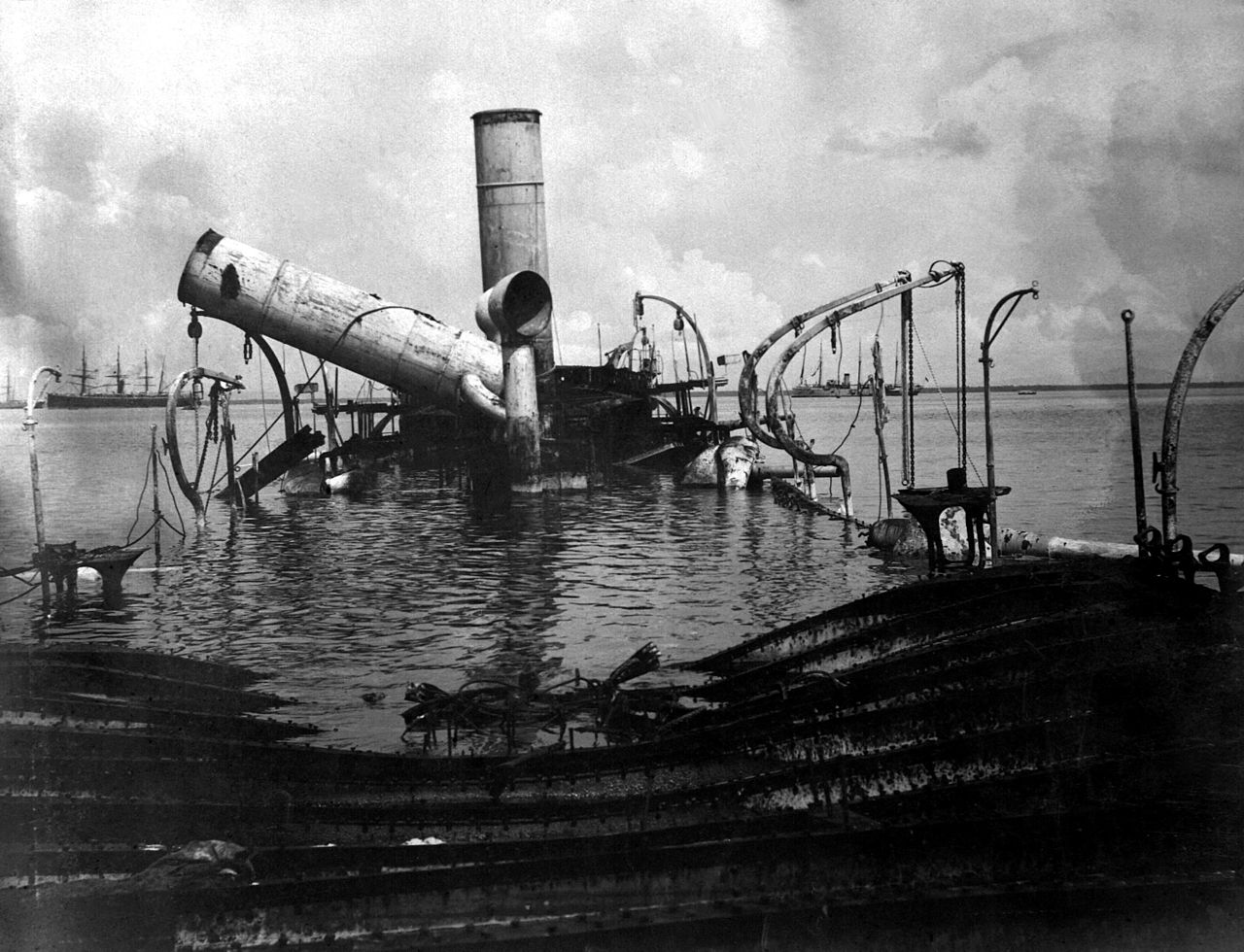
The wreck of Cristina after the battle
Initial reports of the battle reached the United States via Madrid, and suggested that Dewey had won, but suffered heavy losses. It wasn't until May 7th that McCulloch reached Hong Kong with dispatches, which produced jubilation at home. Dewey was quickly hailed as the greatest hero of the war, and in 1899, he was promoted to the unique rank of Admiral of the Navy, which theoretically makes him the most senior officer the USN has ever produced.7 Troops were dispatched to occupy the Philippines, which would remain an American possession until they were captured by the Japanese at the start of WWII. The Filipinos, who had initially hailed the Americans as liberators, felt betrayed, and began an insurgency that took three years to suppress. The Spanish, hoping to retake their possessions, dispatched a "Flying Relief Column", including their sole battleship, Pelayo, although it didn't put to sea until June 16th. It had only managed to get as far as Egypt when news of the Spanish defeat at Santiago arrived in early July, and it was recalled to protect against the possibility of raids on the Spanish coast.8 Dewey made a brief attempt to run for President in 1900,9 but withdrew well before the election and instead headed the General Board until his death in 1917, playing an important role in the development of American sea power.
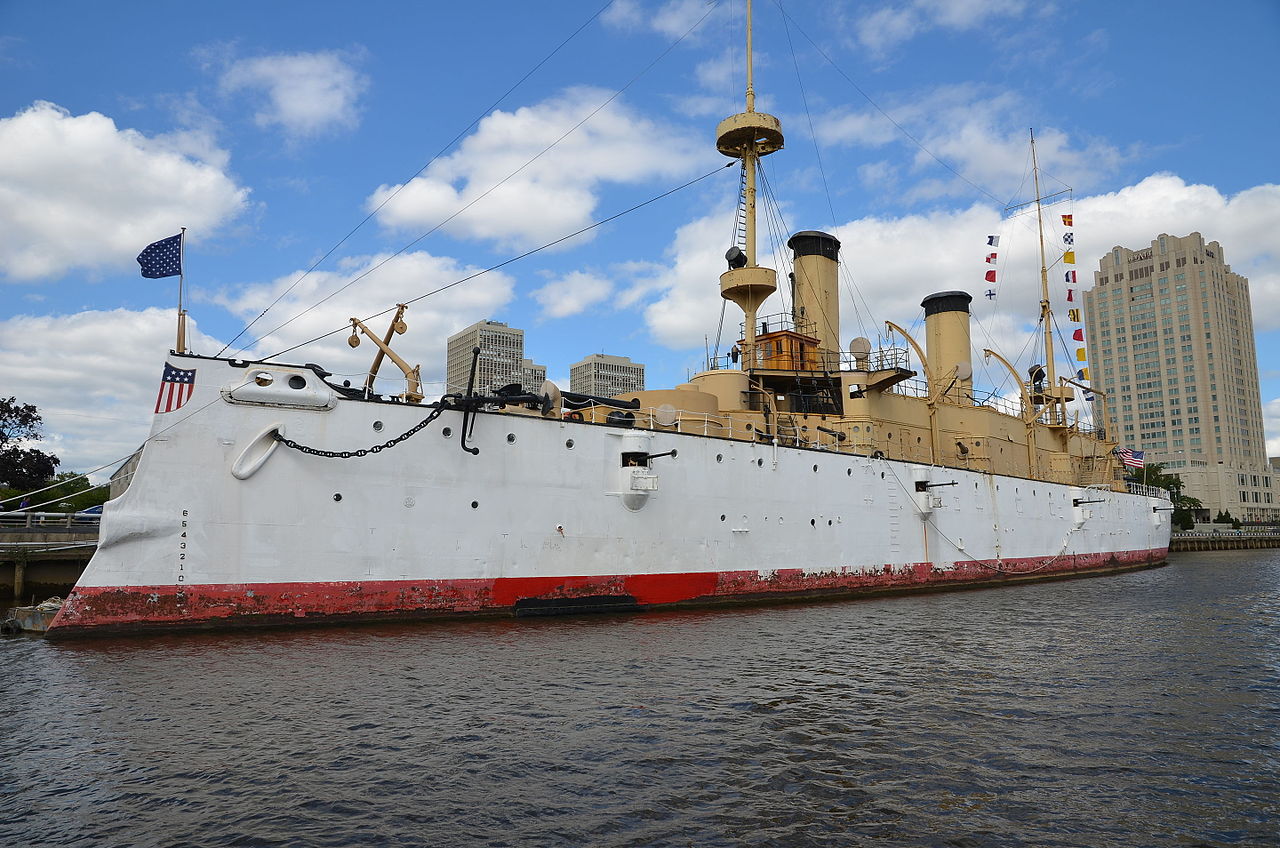
Olympia, preserved in Philadelphia as a museum ship
The Battle of Manila Bay is usually seen as the climactic naval battle of the Spanish-American War, but this isn't really true. While it did decide the fate of the Philippines and boost morale in the United States, the center of the war remained in the Caribbean, where the main strength of the Spanish and American fleets were about to square off.
1 The Revenue Service was the predecessor of the Coast Guard. ⇑
2 Bets were made in Hong Kong about the results of Dewey's sortie, and they were heavily in favor of the Spanish squadron. ⇑
3 There were more powerful fortifications near Manila, but Montojo eschewed them to spare the city damage from any American shells that missed. ⇑
4 This doesn't seem like a big difference today, but due to the rapid change in naval technology at the time, it meant that the Spanish were comprehensively outgunned. ⇑
5 Some sources claim that the Spanish only mined the north channel, not the broader southern one. In any case, they made a complete hash of it. ⇑
6 The wiki article attempts to cast doubt on this, citing the work of a Spanish historian, Agustín Ramón Rodríguez González. He claims that the actual American casualties are 13 dead and 30 wounded, based on rumors in Hong Kong shortly after the engagement. He appears to be a serious revisionist, vastly inflating Spanish claims during the war, based on the theory that there was widespread deception in US records, while apparently taking Spanish records at face value. For some reason, he has a devoted following on Wikipedia, despite spouting what looks to be complete nonsense. ⇑
7 With all due respect to Dewey, the near-hysterical reverence he was held in at the time never made much sense to me. He had three times the broadside the Spanish did, and twice the tonnage, to say nothing of the fundamental rottenness of the Spanish in the Philippines. He deserves great credit for his willingness to run risks and his steadiness in action, but there are dozens of American admirals who have faced and conquered greater challenges, both before and after his day. ⇑
8 The British also refused to let them coal in Egyptian ports, and the Spanish attempts to coal at sea using boats were completely unsuccessful. ⇑
9 He claimed the job would be easy, as the President merely had to follow the laws enacted by Congress, and he was used to following orders. ⇑

Comments
Admiral Montojo's name is misspelled as "Mantojo" many times.
Curses. I shall have to cut the proofreading staff's salary by at least 30%.
Random bit of news delivered via my Google News Alert: USCGC McCulloch is being considered for placement on the National Register of Historic Places.